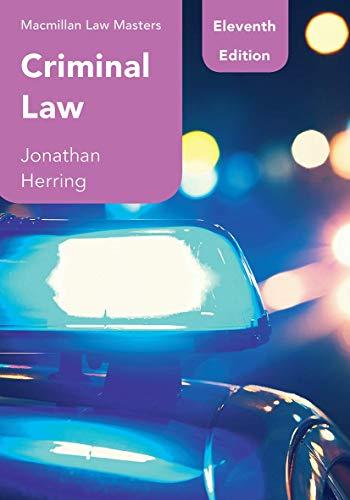Question
We do not dismiss the action against Meineke, however. The plaintiffs in this lawsuit may have some legitimate grievance with Meineke's conduct. They retain a
We do not dismiss the action against Meineke, however. The plaintiffs in this lawsuit may have some legitimate grievance with Meineke's conduct. They retain a variety of contract remedies for any breach that may have occurred. Those remedies include, where appropriate, restitution to the WAC account and consequential contract damages in the form of franchisees' lost profits.See generallyJohn D. Calamari & Joseph M. Perillo,The Law of Contracts 14-5, at 595-96, 15-4, at 651-53 (3d ed.1987). And it is not inconceivable that a class action might be used in a carefully controlled manner to achieve the economies and efficiencies for which that device was intended. But in various ways this lawsuit managed to wander way beyond its legitimate origins, and at the end it spun completely out of control, with a diffuse class and proliferating theories of liability. In fact, this lawsuit came close to visiting corporate ruin on Meineke over what is a vigorous but straightforward contract dispute, totally losing sight of the basic principle that in size and in nature a legal remedy must bear some degree of proportion to the extent of the legal wrong actually committed. If we permitted this judgment to stand, commercial disputes and contract law would be transformed a string of tort claims advanced in a sprawling class action would put many companies and their corporate parents out of business.
Question 71
1. Is it safe to give piracetam to patients with primary intracerebral
haemorrhage? Does it have a neuroprotective effect?
2. Is it safe to give a patient with excessively high blood pressure
(as a sequela to recent primary intracerebral haemorrhage)
angiotensin-converting enzyme inhibitors to lower the blood
pressure?
3. Is it indicated to give piracetam or vincamine to a patient with middle
cerebral artery territorial infarction? Do these have any neuroprotective
effect?
Question 72
What is the mechanism by which subarachnoid haemorrhage is
associated with subhyaloid haemorrhages on fundus examination, and
how can cerebrospinal fluid (CSF) gain access to the subhyaloid space
inside the eye?
Question 73
What is the recommended dosage for nimodipine given intravenously in
cases of subarachnoid haemorrhage, and when should the treatment
start? For how long should the dose be continued?
Question 74
I read recently that hyperuricaemia has something to do with stroke? Is it
recommended to give allopurinol to stroke patients irrespective of their
serum uric acid?
Question 75
Is there a link between hyperuricaemia (although asymptomatic) and
atherosclerosis and cerebral ischaemic stroke?
Question 76
Are phenytoin and carbamazepine indicated in myoclonus, occasionally
seen in ischemic strokes?
Question 77
What is the treatment of chorea or action myoclonus resulting from
embolic stroke to the area of basal ganglia? Does the L-dopa that is given
by some neurologists improve the condition? Does valproate have a role
if the case is action myoclonus?
Question 78
How should a patient with a haemorrhagic cerebrovascular accident
be managed while also having an extensive inferior wall myocardial
infarction?
Question 79
What is the best way to manage cortical vein thrombosis? If heparin is to
be used, what is the recommended dosage and how long should this
treatment last?
Question 8021
In the case of cortical vein thrombosis, for how long should
anticoagulation be continued?
Step by Step Solution
There are 3 Steps involved in it
Step: 1

Get Instant Access to Expert-Tailored Solutions
See step-by-step solutions with expert insights and AI powered tools for academic success
Step: 2

Step: 3

Ace Your Homework with AI
Get the answers you need in no time with our AI-driven, step-by-step assistance
Get Started


